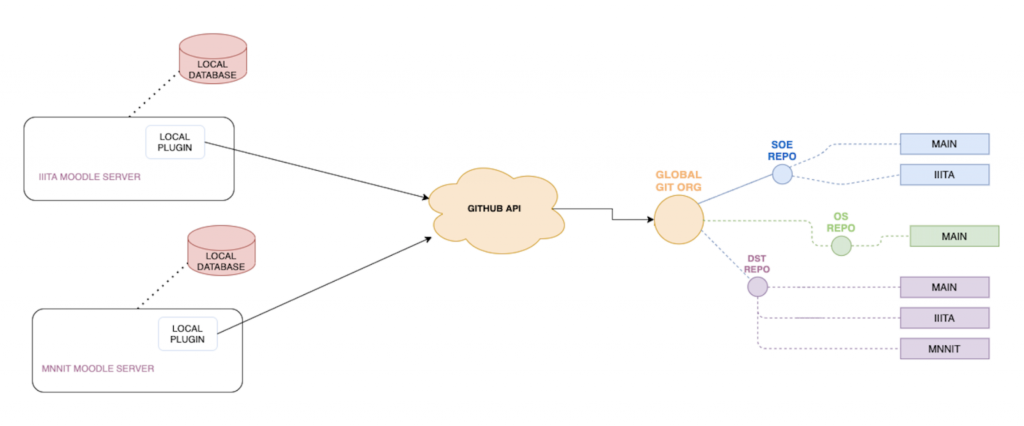THE TEAL2.O
The implementation of TEAL 2.0 shall make the teaching-learning process more collaborative and accessible to everyone. A powerful Learning Management System (LMS) , built on the Moodle as it base,shall support the resource sharing and management of the course content effectively and efficiently across the globe. Each institution shall establish a Support and Development Center to train and educate the staff to use the LMS for enhancing the teaching-learning experience.
GOALS & BENEFITS
Major benefits of the Implementation of the TEAL2.0 LMS are as follows:
- to aid in making course creation, and teaching collaboratively by covering every aspect of a standard university course.
- to allow professors/instructors to create courses with ease, including a course creditt structure similar to the university.
- to allow the professors/instructors to share and retrieve courses from the global database and use them for their purposes.
- to allow for modification of existing courses in the global database while tracking the changes made to the course with version history.
- to help admins to construct degree programs consisting of the existing courses or create new courses if needed.
- to consist of the comprehensive features offered by the powerful open-source learning management system, Moodle
DATABASE MODEL & STRUCTURE
The TEAL 2.0 model consists of two major subparts in its database architecture : The Global Database and The Local Database. The aim is to create a global database so that it becomes accessible to all that stores all course specifications, learning content, user records interaction, level of outcome attainment, user ranking, etc.
Global Database Structure
The global database structure is based on git and serves to explain how the data would be stored and organised on the chosen service globally. This would be based on a file system based architecture since git uses file system to represent or interact with its contents.
Local Database Structure
This database carries all the goodness from its Moodle inheritance plus the tables required for the course plugin development. Given its complexity, the existing Moodle database architecture has been only extended, not modified, to avoid the complicated repercussions.

The above global database is organized as a collection of repos with branches corresponding to two different institutes IIITA and MNNIT. Both the institutes have their separate local database. Local courses of the institutes are stored separately along with the main course database and are accessible to all through the Global Git Org. For example, user of MNNIT Moodle server can access the public SOE repo of IIITA and also the MAIN SOE repo.
